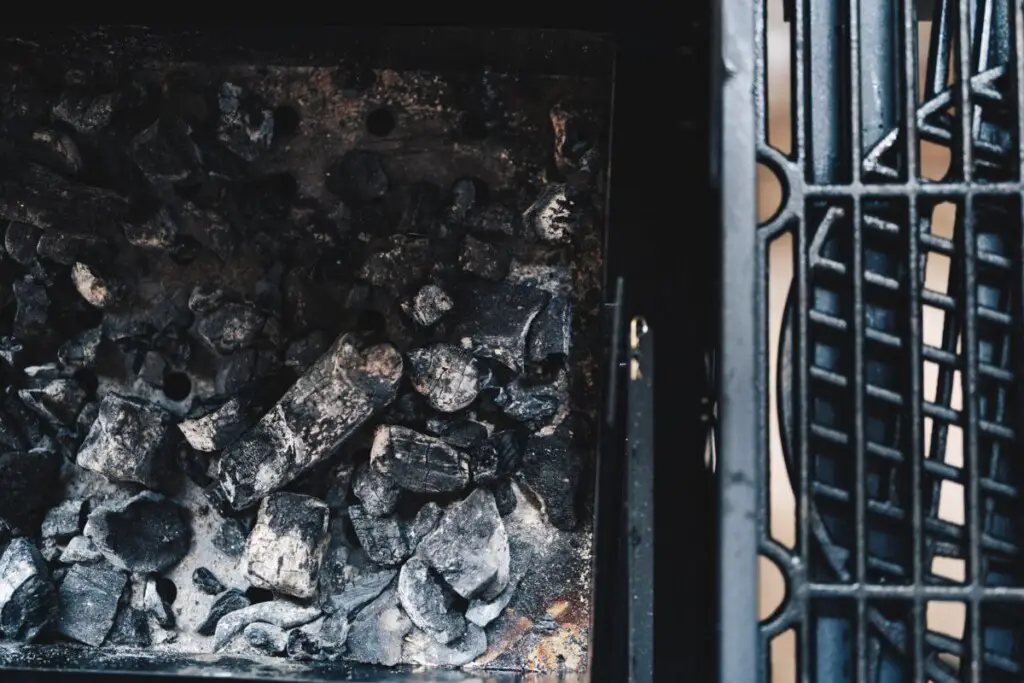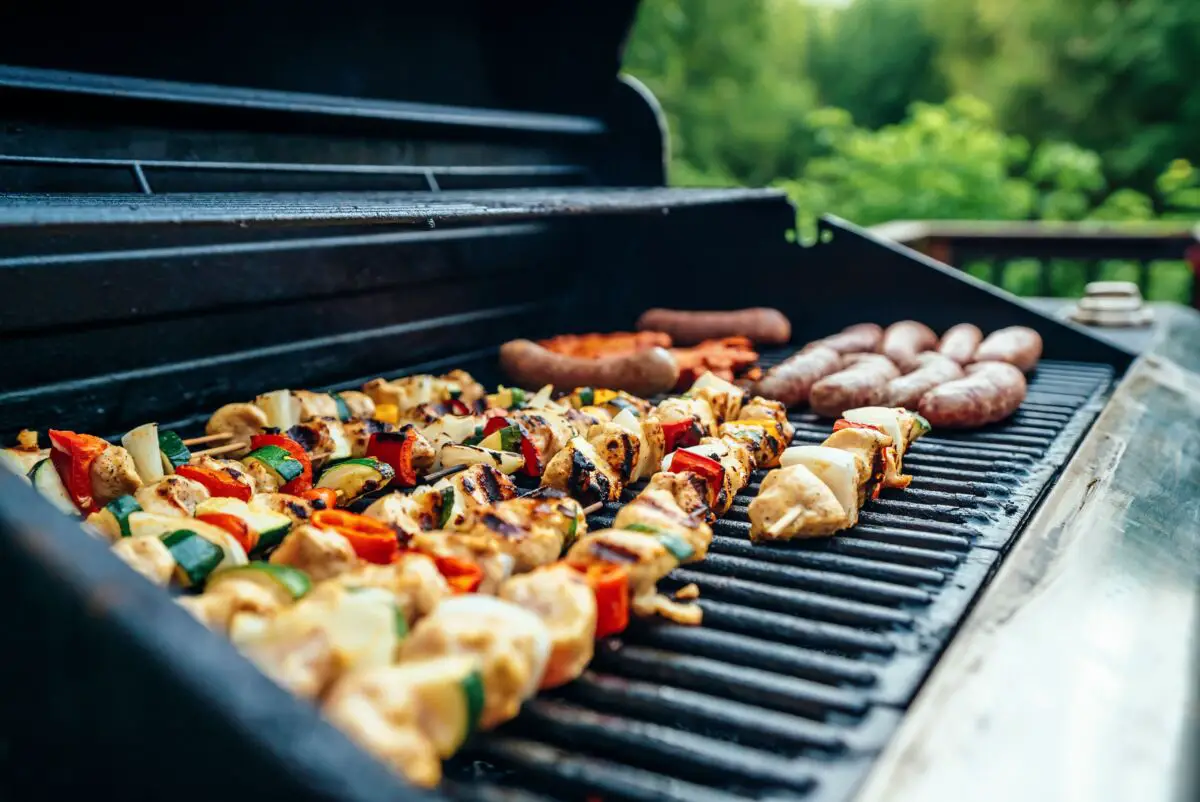If you had an expansive garden, barbecuing would be far less complicated than a BBQ on your balcony. You would have more freedom in the choice of BBQ grill and space for family and friends. That changes when using your balcony.
To BBQ on a balcony, safety is a critical consideration, apart from maximizing the limited space. You need to check for possible flammable materials, get the right grill, observing regulatory requirements, and much more.
These detailed steps will help you BBQ on your balcony safely and enjoy those tasty grilled ribs.
Check What Your Balcony Is Made Of
Before setting up your grill, you need to consider what your balcony is made of.
Obviously, some balcony structures are more prone to fire disasters than others. If yours is made of wood, you’ll need to take extra precautions.
Even if the heat produced by your grill doesn’t cause a fire, it may cause an unsightly burn on your precious wood. And it’s not just the heat you should be concerned about, but also potential sparks jumping from the fire onto the wood.
You should also remove wooden furniture from your balcony beforehand if they are too close to your grill.
Take note that windy conditions can increase the risk of a fire. Therefore, you should probably choose a day that isn’t so windy or place wind barriers around the area.
It’s best to have a fire extinguisher within easy reach as you keep an eye on everything in the balcony.

Check for Flammable Materials
Once you ensure that your balcony is free of potential fires, you need to check for flammable materials nearby.
Ensure that there are no trees, branches, or vines close enough to the balcony to catch fire easily. Even if the trees aren’t close, a strong wind can blow leaves and overhanging branches onto the grill.
You’ll also need to ensure that the eaves on your house are not so low as to become a fire hazard. You might need to move your grill away to avoid this.
Even after eliminating all possible fire hazards, you should still take some precautions.
A fire-resistant grill mat comes in handy in case of embers falling from ash pans in charcoal grills. Besides, you or your pet might just accidentally knock over the grill.
Check Regulatory Guidelines
Due to the potential risk of fire in your home and on your balcony, each state and city in the US has set specific regulations regarding balcony BBQs.
Therefore, you should get to know and comply with the regulations in your area.
Take note that the statewide rules are just the bare minimum. You’ll typically find the local laws to be more extensive.
Besides researching the local laws, it’s wise to consult the authority having jurisdiction (AHJ) within your areas. An AHJ is any entity that has the authority to interpret and enforce fire codes. Such AHJs include fire departments, local building code authorities, and other organizations.
Most importantly, always speak to your landlord before setting up your balcony BBQ.
Choose an Electric, Gas, or Charcoal Grill
Once you’re aware of all the rules, it’s time to get the right equipment.
If you’re planning on using an electric grill, you’ll be glad to know that they are not typically classified under the restricted open-flame devices.
However, various regulations apply when using electric grills, apart from common-sense practices. An important aspect is to ensure the extension cord is rated for the device’s amperage draw.
The extension cord should also be able to withstand the rough outdoor conditions. You certainly don’t want the insulation to wear off as it experiences rough weather conditions.
That also means you shouldn’t use an indoor electric grill outdoors. After all, the smaller indoor electric grill won’t produce a similar flavor to the taste you expect from grilling.
If you’re looking for the best-tasting barbeque, either an outdoor electric or gas grill will serve you well.
If using a gas grill, make sure the area is well ventilated. The grill should have been tested for leaks at least once per season. And the refillable tanks must come only from certified professionals.
When using charcoal grills, never spray lighter fluid on the fire. You run the risk of a dangerous flare-up, even if you’re using an approved lighter fluid.
Optimize Storage Space with Shelves/Tool Holders
With the right grill, you’re ready to set up your barbeque area.
Storage space is a key consideration based on the limited balcony area.
Fortunately, you can get even more storage space vertically despite the limited horizontal area. Obviously, most of the horizontal space would be best allocated to sitting and movement. Therefore, focus most or all your storage on the vertical space.
Shelves come in handy.
Attach shelves to balcony railings and walls. That’s convenient for grill tools and condiments.
If you can’t attach shelves, you can place hooks on your tables and chairs for storage.
Other storage options include:
- a magnetic tool holder
- barbecue aprons with storage pockets
Alternatively, you can use Swiss-army-knife-style grill tools, so everything is in one bunch.

Preheat Your Grill
After all that preparation, now you’re ready to grill.
And the secret to an excellent barbeque is preheating the grill. This eliminates cold spots and ensures uniform grilling.
Depending on the type of grill, preheat it for 10-20 minutes:
- gas grills take about 10 minutes
- charcoal grills need 20 minutes
Complement this preheating process with greasing of the grates of your hot grill using cooking oil. Doing this before you start cooking will discourage dirt and grease deposits.
Scrubbing the grill grates using raw onion can achieve the same effect.
Grilling Fast-Cooking vs. Slow-Cooking Foods
Once you start grilling, there are two important general rules you must observe:
- use direct heat for fast-cooking foods
- use indirect heat for slow-cooking foods
Fast-cooking foods include burgers and hot dogs. Since the section of your grill getting direct heat is the hottest, it’s well-suited to such fast-cooking foods.
Slow-cooking foods include ribs and potatoes. Cooking such foods over indirect heat will ensure slow and steady cooking, and produce a delicious smoky flavor.
Generally, direct or indirect heating applies to charcoal grills. You can place the food either above the charcoal or to the side. For convenience, place the briquettes or coal only on one side of your grill, leaving the other side free of indirect heat.
When using a gas grill, turn to low heat for indirect heating, and high or medium for direct heating.
For effective slow-cooking (indirect heating), make sure to close the lid to keep the heat in.

Clean Out Your Grill
Once you finish cooking, cleaning is the final step.
Cleaning isn’t just about hygiene, but also an important safety precaution. That’s because dirty grills pose a fire hazard. A grease buildup can cause a dangerous flare-up or even a fire.
You’ll also notice that a dirty grill will affect the flavor of your food.
Therefore, you need to clean everything up in readiness for the next barbeque.
Doing this right after cooking is much easier before everything sticks to the grill.
Clean any food or debris on the tops and bottoms of the grill grates and rods using a wire brush dipped in soapy water. A back and forth motion should loosen up the sticky grime. Since you had used the grill a few moments ago, you don’t need to heat it up to loosen the food particles.
For charcoal grills, you need to empty all the ash.
Although you have to consider many safety precautions when having a BBQ on your balcony, you’ll soon get used to it after a while. It will only seem challenging the first time, but the second time it will likely be quite an enjoyable experience.

